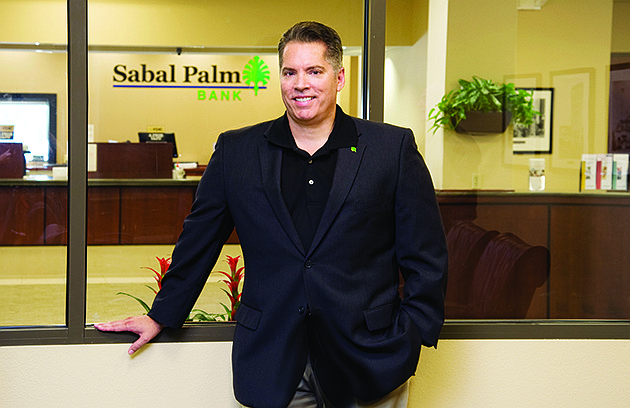- July 26, 2024
-
-
Loading

Loading

When Neil McCurry Jr. became president and CEO of Sabal Palm Bank in early 2013, he quickly realized that a relatively small number of bad loans were high maintenance.
The community bank's lenders were spending half their time managing bad loans when they could've been out making new loans, McCurry says.
Today, Sabal Palm has zero bad loans and the bank's loan portfolio grew 21% for the year ending Sept. 30. “It doesn't happen overnight,” says McCurry. “We've been working on it nonstop since the beginning of last year.”
Sabal Palm is not alone. The banks headquartered on the Gulf Coast from Tampa to Naples have reduced their ratio of noncurrent loans to total loans to 1.54% as of Sept. 30, down from 2.28% one year ago, according to data from the Federal Deposit Insurance Corp. It's another indication that the health of banks in the region continues to improve.
Indeed, the performance of Gulf Coast banks by this measure is better than their peers around the state. The ratio of noncurrent loans to total loans was 4.05% for all Florida banks and the 3.22% for Florida banks with assets less than $100 million as of Sept. 30, according to the FDIC.
In addition, many banks on the Gulf Coast don't need to set aside as much in reserves for potential future loan losses. Even though net loans at Gulf Coast banks rose 18.6% in the one-year period ending Sept. 30, loan-loss allowance grew just 2.8%.
McCurry's efforts illustrate that community bankers have been striving to clean up their loan portfolios since the recession clobbered borrowers. Bad loans have acted as a drag on banks because they require more work and capital to dispose.
In the third quarter of 2013, Sabal Palm took a charge of $1.5 million to resolve the bad loans, less than the $2 million McCurry had estimated. The bank had raised $6 million of capital earlier in part to resolve these issues and fund future loan growth. “We're proud of what we've done,” McCurry says. “We feel good that we're a profitable community bank without any problem loans.”
The problem loans were the kind that plagued many other lenders: land in DeSoto County, a commercial property in Manatee County, a warehouse in Hillsborough County and a house in Sarasota.
“Last year we spent six months valuing the properties,” McCurry says. “We had to have a real honest conversation with ourselves about the value of these properties.”
McCurry personally got involved in marketing the properties, calling on prospective buyers. “I sold three quarters of them by myself,” he says.
The rebounding real estate market is helping. That's because real estate-based lending is the bread and butter of Florida banking.
Banks can now get rid of properties they foreclosed on and recoup more of the values than they would have just a few years ago. For example, NorthStar Bank in Tampa recently sold a warehouse building for more than it had valued on its books.
“That was the only serious problem asset we had,” says David Stone, the president and CEO of NorthStar. As a result of the sale, the bank's ratio of noncurrent loans to total loans fell to 1.28% as of Sept. 30 from 4.14% one year ago.
Banks' ability to raise capital has helped them clear bad loans off their balance sheets. For example, Freedom Bank of America raised $8 million two years ago and whittled down its ratio of noncurrent loans to 0.07% of total loans as of Sept. 30, down from 2.14% at the same time last year.
“This bank was in a position two years ago to begin moving forward with new capital,” says Freedom CEO Cathy Swanson. “That was a very deliberate, disciplined process.”
